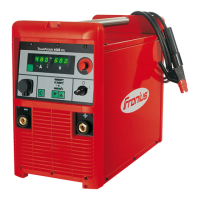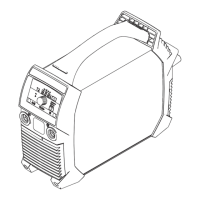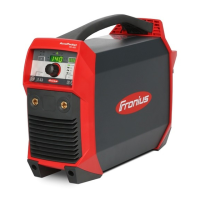104
Visual inspections
General The following must be visually inspected without any further dismantling of the device. Ob-
vious defects in any safety-related device components are unacceptable. Defects that
could pose a risk during the visual inspection must also be recorded.
Any defects that could cause other hazards must be repaired immediately or restrictions
placed on the further use of the system until repairs have been effected.
General condi-
tions
- There must be no heavy accumulation of dust or contaminants
- Gas pipes and connections must not be faulty
- Markings and labels (rating plate, warning stickers, grounding symbols, etc.) must be
present and legible
- There must be no damage or indications of improper use
Welding torch /
electrode holder /
welding current
return terminal
- All housing components, insulation components and protective covers must be pres-
ent and undamaged
- Connections must not be faulty
- Switches must not be damaged
- There must be no other signs of damage
Mains supply and
connecting lines
- Connecting lines and other cables must not be damaged or defective
- Insulation must not be damaged (do not use insulating or adhesive tapes to repair
damage)
- Connectors and plug connections must not be damaged or deformed
- Strain-relief devices, bending-protection devices, line routings or mountings must all
be effective
- Lines/plugs must be suitable for the application and the power level
- Fuse cartridges and device fuse holders must not be faulty
Welding circuit - The lines must not be damaged or faulty (do not use insulating or adhesive tapes to
repair damage)
- Coupling/plug-in devices must not be defective, deformed or damaged by heat
- Strain-relief and bend-protection devices must be in good working order
- Lines/plugs must be suitable for the application and the power level
IMPORTANT! Use the relevant standard as the basis for determining the cross-section
and current capacity of mains cables. As the current capacity can vary depending on how
the cables are routed and the different ambient temperatures, the requirements set out in
the standard must be observed when changing mains cables. Also refer to the applicable
requirements and standards in your country.

